4.1 The Jishibai Troupe “Nishiwakaza”
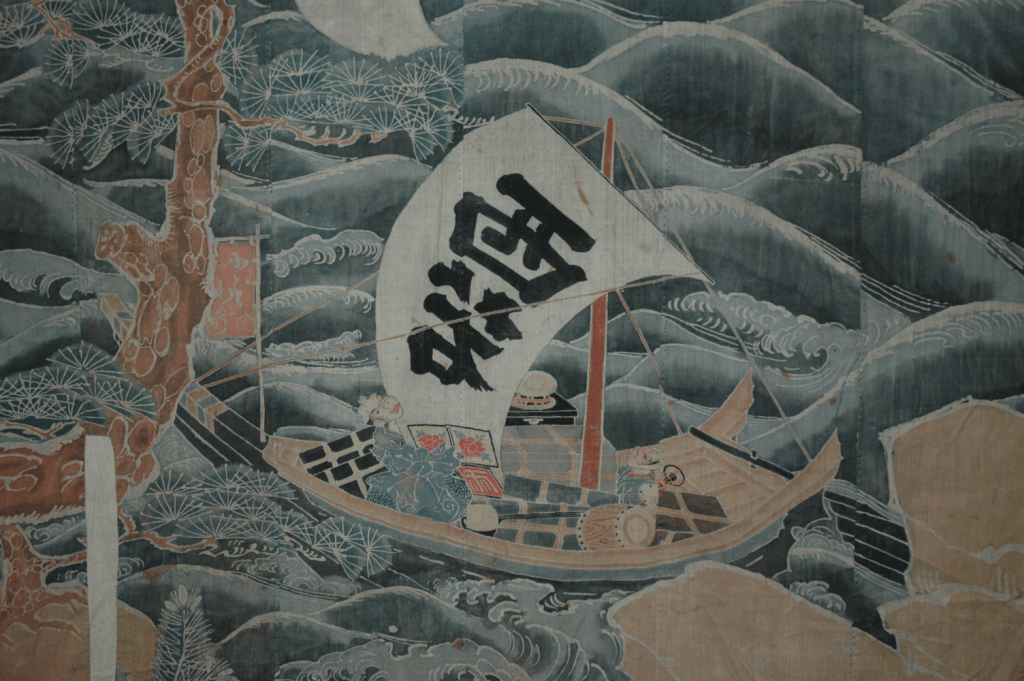
The Jishibai troupe “Nishiwakaza” was formed by people who, having said “I’T m not interested in Kabuki,” found themselves wanting to stand on the stage they had built themselves. The name “Nishiwaka” means “Nishishiogo’s Wakashu” (Youth Group) and was taken from the characters on the Hokakebune (sailing boat) painted on the Omaku (Grand Curtain) dated Bunsei 3 (1820). It is a stylish design where the characters are visible from the reverse side of the wind-filled sail.
They made their stage debut in 1998 (Heisei 10) with “Shiranami Gonin Otoko” and became hooked. In subsequent performances, they boldly took the final slot (tori), adding “Kotobuki Soga no Taimen,” “Ehon Taikoki, Judanme (10th Act),” and “Sugawara Denju Tenarai Kagami, Terakoya (The Village School)” to their repertoire.
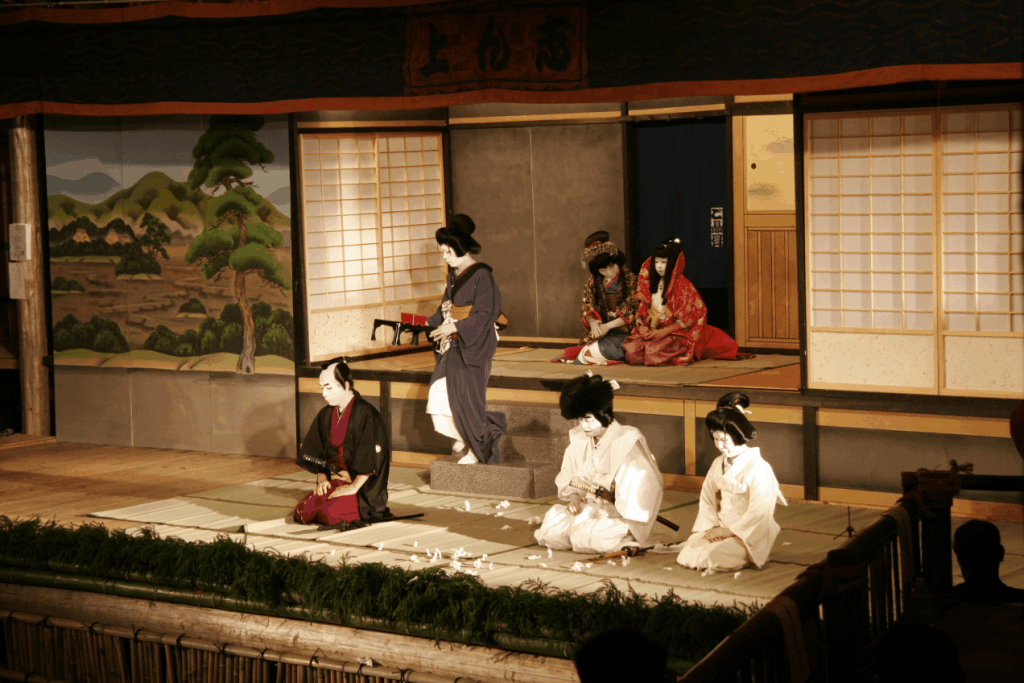
4.2 Children’s Kabuki
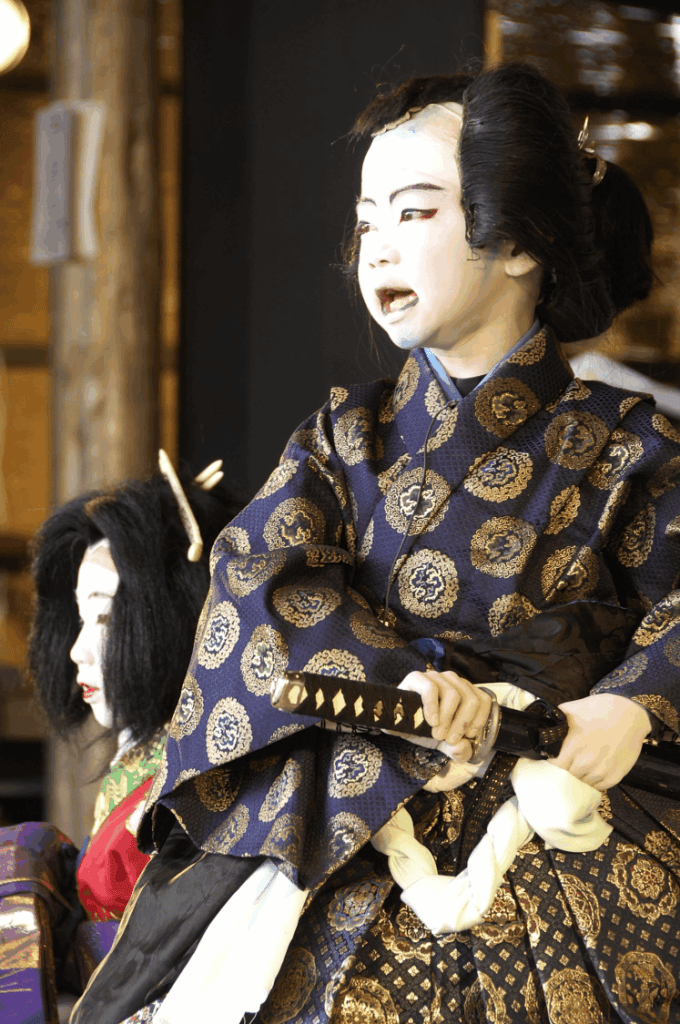
Meanwhile, it is the Children’s Kabuki that is popular enough to cause a rain of ohineri (donations thrown to the stage). It began in 2001 (Heisei 13) when second-graders at the local Shiota Elementary School took it up as part of their “integrated studies” class. The tradition of learning Tokiwazu “Kodakara Sanbaso” and “Shiranami Gonin Otoko” has been passed down to the merged Omiya Kita Elementary School.
Furthermore, starting in 2002 (Heisei 14), we recruited from the entire town (and the entire city since 2005 (Heisei 17)) and began Tokiwazu succession workshops, where children earnestly practice the Shamisen, Tokiwazu-bushi (narration), and dance.
As there are no instructors within Ibaraki Prefecture, we initially received guidance for the plays from Maki Kabuki in Sano City, Tochigi Prefecture, and later from Mr. Bando Hikogoro of Chichibu Kabuki in Saitama Prefecture. For Tokiwazu, we receive instruction from the members of the Yama-age Preservation Association in Nasukarasuyama City, Tochigi Prefecture.

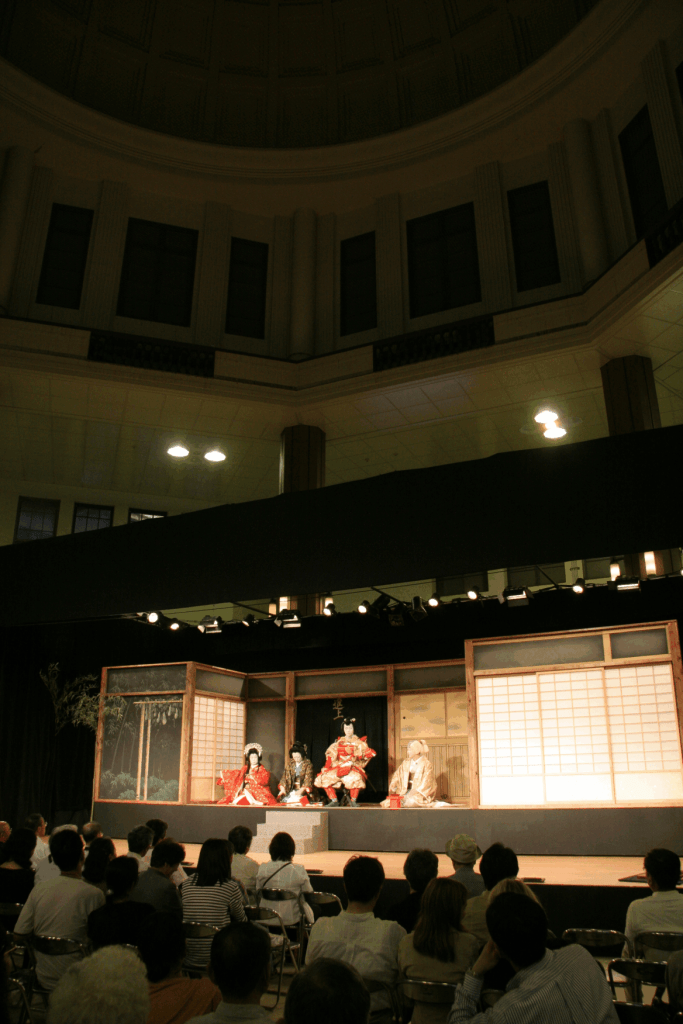
at the Tokyo Station Marunouchi North Exit Dome.
Our art, with its short history, is of course unskillful (hetakuso). Even so, we have been invited to perform on grand stages. The Children’s Kabuki appeared at the “Furusato Kabuki Festival” held at NHK Hall. And on the special stage at the Tokyo Station Marunouchi North Exit Dome, Nishiwakaza gave an enthusiastic performance of “Taikoki, Judanme” over two days.
However, our home ground is, after all, “The Nishishiogo Revolving Stage.” We exist because of this stage. We humbly ask that you do not forsake us and continue to give us your support.
4.3 The “Great Heisei Curtain Project” by Volunteers
“The Great Heisei Curtain Project” took five years to complete, involving about 200 volunteers, from elementary school students to the elderly. Following the example of the Bunsei era Omaku—which was said to be made from fabric grown, spun, and woven locally—a hataori (weaving) group active at the history museum took the lead, calling on people to start by cultivating cotton. Three years were spent spinning the thread and weaving the cloth. The group commissioned Mr. Asai Ikko, a textile dyer from Hyogo Prefecture, to dye it, and it was unveiled at the 2006 (Heisei 18) performance.


The exchange with the volunteers is our greatest asset. The circle of people that has expanded, thanks to “The Nishishiogo Revolving Stage,” will surely become a force that gives us new wisdom and the power to act.
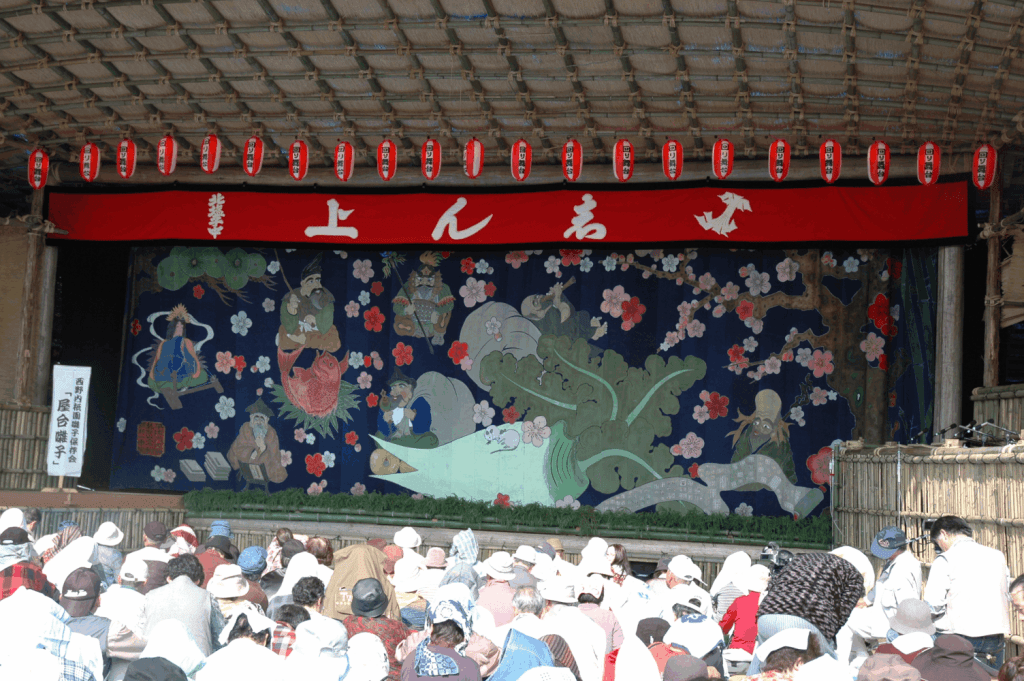
4.4 Passing on the Excitement to the Future.
“The Nishishiogo Revolving Stage” has neared extinction many times throughout its long history, yet it has been miraculously revived through the passion and support of many people. However, what we face now is a new wall: a lack of successors due to the declining birthrate and aging population. To continue the stage into the future, we absolutely need the understanding, assistance, and warm support not only of the region, but of many more people. We keenly feel that “continuation” is now far more difficult than “revival.”
What we are aiming for is not just to protect an old tradition. We hope to create a new culture together—one where people across generations and regions can meet, be moved, and feel Waku-Waku (excitement) in their daily lives through the process of building the stage and performing.
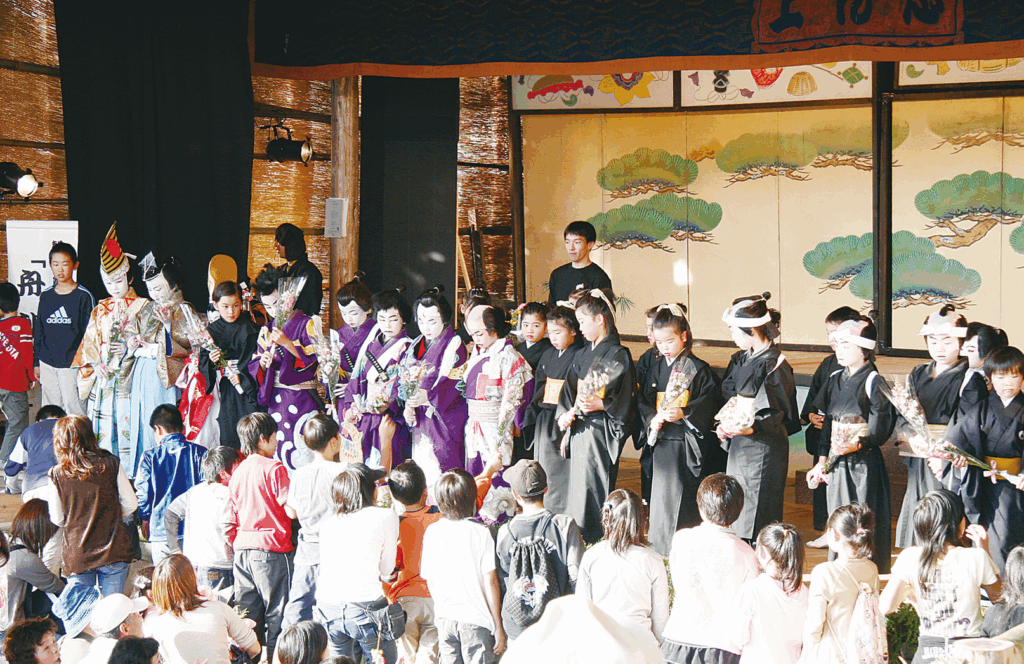
To keep the fire of tradition alive, and to light a new flame of inspiration.
So that “The Nishishiogo Revolving Stage” can continue
to be a source of hope for the region.
We ask you, please, lend us your strength.
Let us spin the story of this stage, continuing into the future, together.

